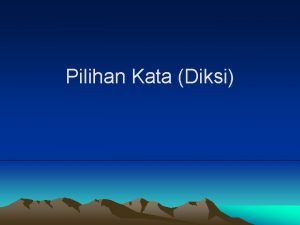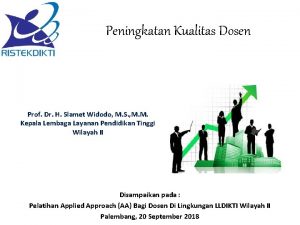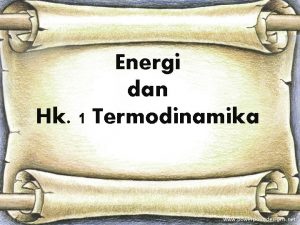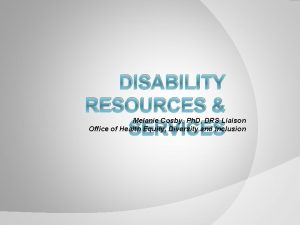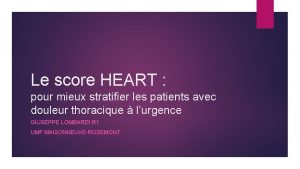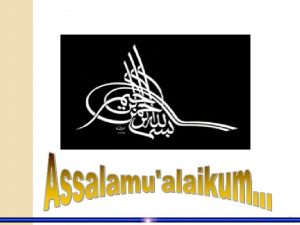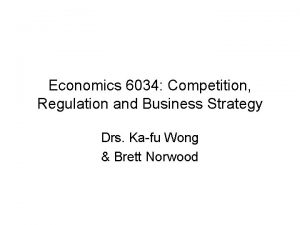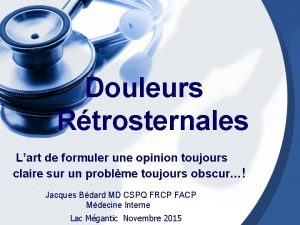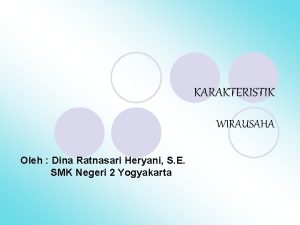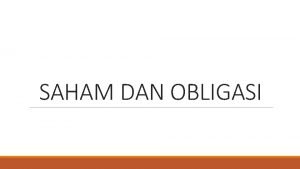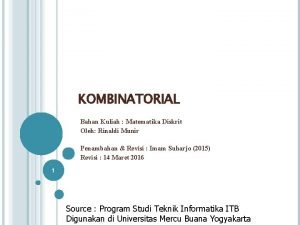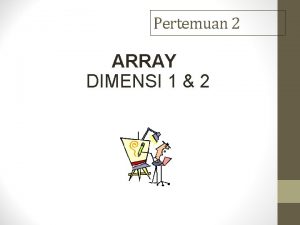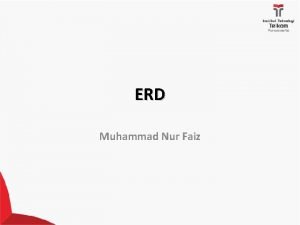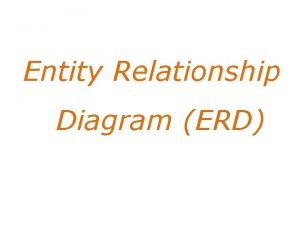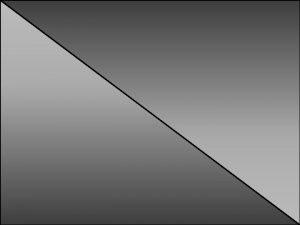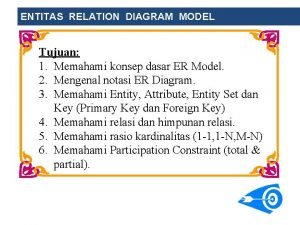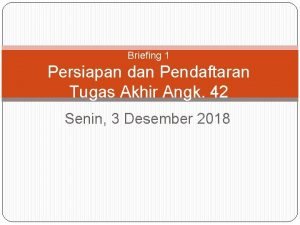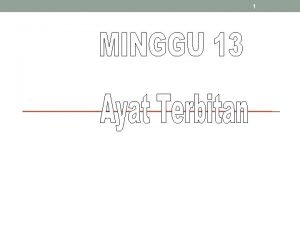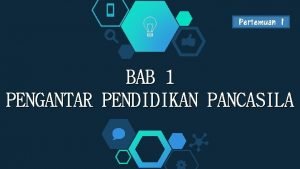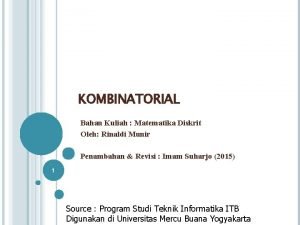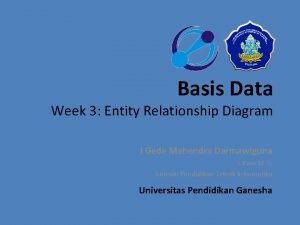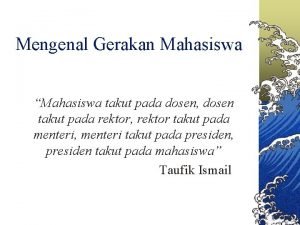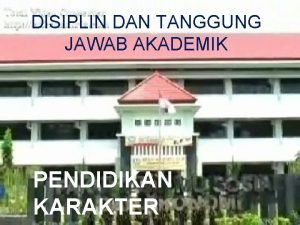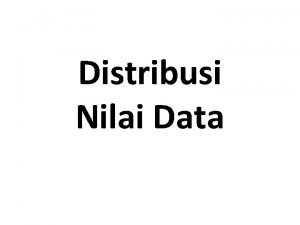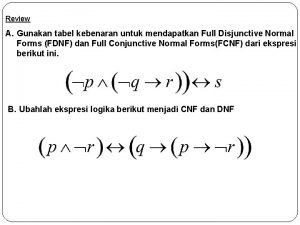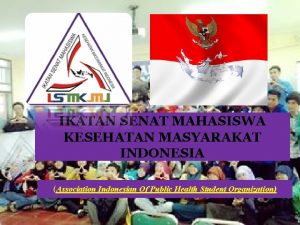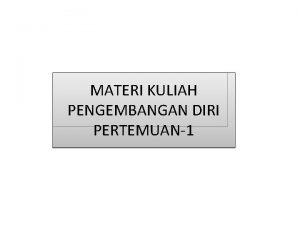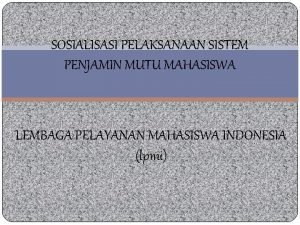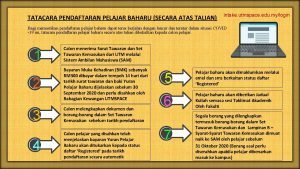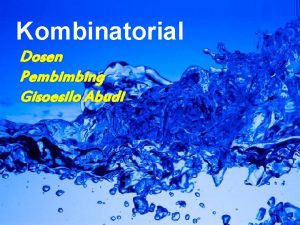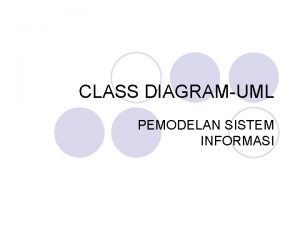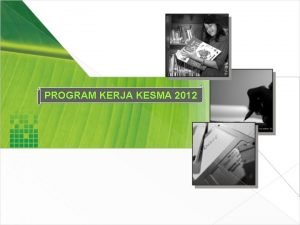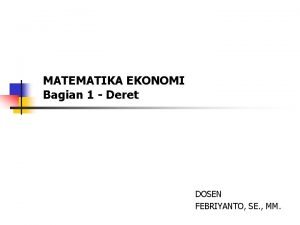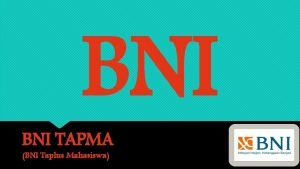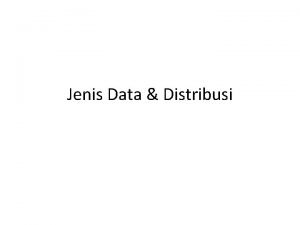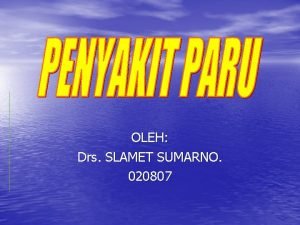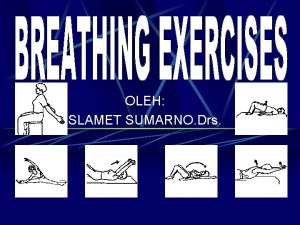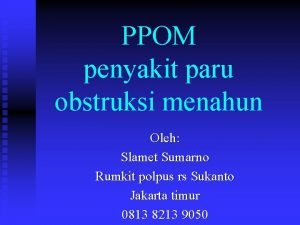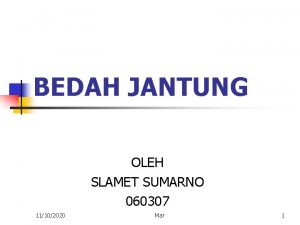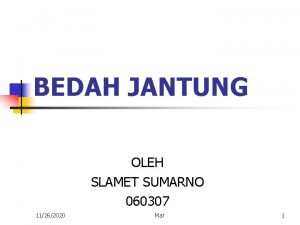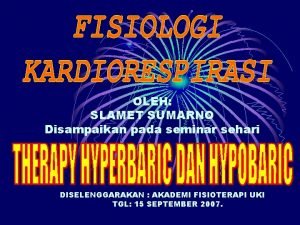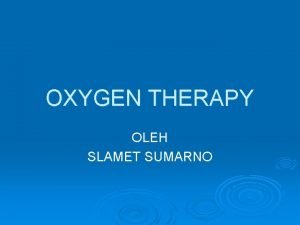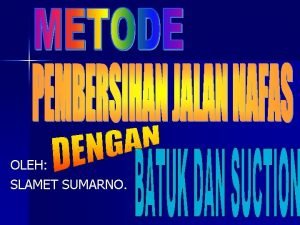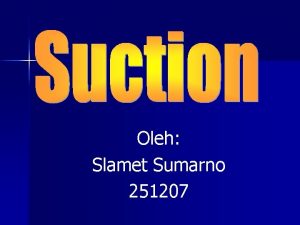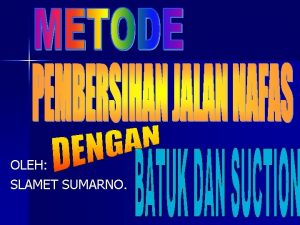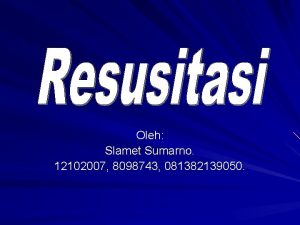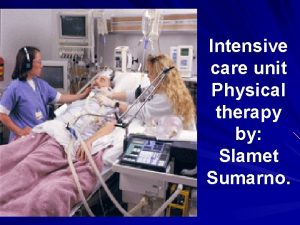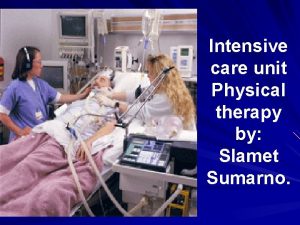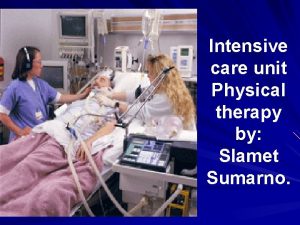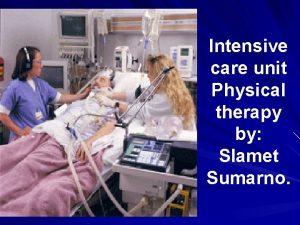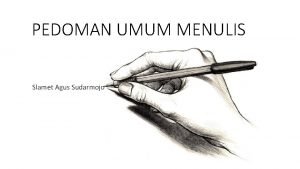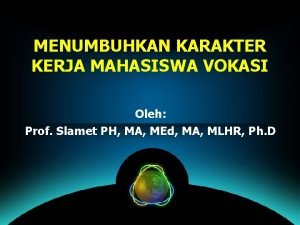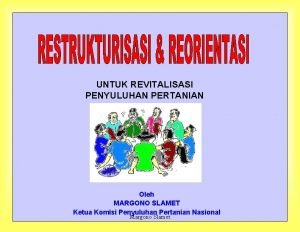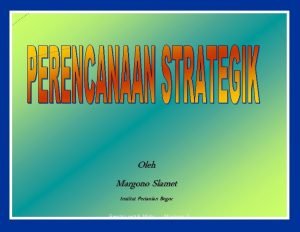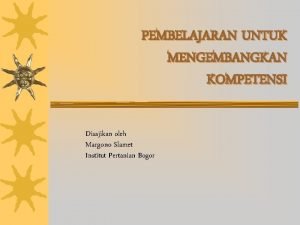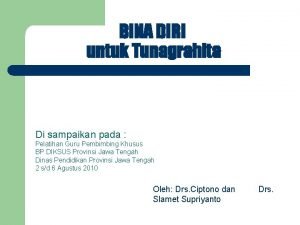Oleh Drs Slamet sumarno Di sampaikan untuk Mahasiswa




















































- Slides: 52


Oleh: Drs. Slamet sumarno Di sampaikan untuk Mahasiswa Eksekutif Universitas Indonusa Esa Unggul Klas Jauh Bandung Pada tanggal: 9 Desember 2007

PENDAHULUAN. dan. Artery jantung. Anatomy normal The. Anatomi Normalarteria Heartcoronarria - Coronary Left Main CA Layers of the Arterial Wall Circumflex Right CA Left Anterior Descending Coronaria Arteri Marginal Branch


Pengertian volume ventrikel kiri EDV End Systolic Volume (ESV) Volume akir sistol (akir kontraksi ventrikel) Stroke Volume (SV) = EDV - ESV Ejection Fraction (EF) = SV EDV Normal darah yg dipompo ventrikel kiri: 62% End Diastolic Volume (EDV) Volume akir diastol (volume akir pengisian ventrikel) ESV Hambatan pompa jantung adalah indikator terbaik dari kemampuan kerja jantung dan prognosa kondisi jantung.

Pengertian 1. Q=Cardiac Output (COP) = Heart Rate X Strooke Volumes 2. Cardiac Index = COP body surface area 3. Preload: Volume darah yang masuk ventrikel saat diastole (End Diastole Volume= reflects stretch of the cardiac muscle cells) 4. Afterload: Tahanan ventricular selama systole (Kemampuan otot ventrikel untuk mendorong darah ke aorta) 5. Frank Starling Law of the Heart - Kemampuan kontraksi otot ventrikel terbesar mulai pre load secara bertahap. 6. Myocardial Contractility – Kekuatan kontraksi otot jantung dan perkembangannya sampai preload. 7. Regulated by: 1. 2. 3. 4. sympathetic nerve activity (most influential) catecholamines (epinephrine norepinephrine) amount of contractile mass drugs

Starlings Law of the Heart and Contractility SV u contractility > 100 70 -80 cc < 60 left ventricular performance normal contractility d contractility (heart failure) preload (venous return)

Curves saat tekanan ventrikel indikasi kemampuan kontraksi Dan fungsi jantung. Perubahan tekanan per tahap d. P/dt = change in pressure per unit of time d. P/dt 120 Normal Heart Failure Gambaran peningkatan saat dan akhir tekanan diastol (lemah jantung) 0 Pada jantung normal SV= 60 -80 CC Jantung sakit SV = 40 -50 CC Jantung terlatih SV= 90 -250 CC

Kemampuan kontraksi dipengaruhi oleh 1. 2. 3. 4. Kekuatan otot jantung. Fleksibilitas otot jantung. Tahanan perifer (aorta, jaringan, vena Peningkatan maks selisih preload dan afterload (d. P/dt from LV pressure curve) 5. Pengaruh Positive/negative iontropic. 6. Ejection fraction (EF = SV/EDV) used in clinical practice 7. Hormonal (epineprin atau norepineprin) increase contractility assumed with increase EF with Ca, NE, digitalis, exercise with [K]o, [Na]o

Contractility related to : 1. sympathetic adrenergic nerves a. catecholamines: epinephrine norepinephrine b. Obat: digitalis sympathomimetics anesthetics, barbiturates 2. Hilangnya kemampuan kontraksi otot misalnya MCI, cardiomyopathy.

Definisi 1. Perbedaan tekanan oksigen antara darah arteri dan vena. Arteriovenous Oxygen Difference (AVO 2 D) PENGUKURAN DALAM ml % - ml O 2 / 100 ml blood 2. Oxygen Consumption (VO 2) – Jumlah oksigen yang dibutuhkan darah untuk metabilism dalam menghasilkan energi/ 1. “absolute” measures: L / min , ml / min 2. “relative measures: ml / kg body wt. / min 3. Fick equation: VO 2 = COP X Selisih O 2 arteri dan vena 3. Maximum Oxygen Consumption (VO 2 max) Jumlah oksigen yang mampu disediakan secara maksimal per menit untuk metabolism dalam menghasikan energi 1. Tak langsung 220 -usia = 60 -80 % VO 2 maks. 2. Spirometri.

Definisi 4. Myocardial Oxygen Consumption VO 2 of the heart muscle (myocardium) "estimated" by RPP: HR X Sistole BP. 5. Functional Aerobic Impairment: predicted VO 2 max - attained VO 2 max predicted VO 2 max mild moderate marked severe > 27% - 40% 41% - 54% 55% - 68% 69%

Definitions 1. Systolic Blood Pressure (SBP) pressure measured in brachial artery during systole (ventricular emptying and ventricular contraction period) 2. Diastolic Blood Pressure (DBP) pressure measured in brachial artery during diastole (ventricular filling and ventricular relaxation) 3. Mean Arterial Pressure (MAP) "average" pressure throughout the cardiac cycle against the walls of the proximal systemic arteries (aorta) 1. estimated as: . 33(SBP - DBP) + DBP 4. Total Peripheral Resistance (TPR) - the sum of all forces that oppose blood flow 1. length of vasculature (L) 2. blood viscosity (V) 3. hydrostatic pressure (P) 4. vessel radius (r) TPR = ( 8 ) ( V ) ( L ) ( r 4)

Cardiovascular Hemodynamic Basics Pressure (MAP) Flow (COP) = Flow (COP) P aorta – P vena cava = Resistance (TPR) = ( ) (Pa – Pv) (r 4) (8) (V) (L) ( ) (r 4) Normally Resting Q is about 5 - 6 liters / minute V = viscosity of fluid (blood) flowing through the pipe L = length of pipe (blood vessel) r = radius of the pipe (blood vessel) Pa = aortic pressure TPR=Total peripheral Resistance Pv = venous pressure MAP= Means arterial Presure

Brain The Systemic Circulation Lungs Veins (Flexible Compliant “Pipes”) Arteries (Stiff Inflexible “Pipes”) Precapillary Sphincters Liver Stomach Pancreas Intestines Kidneys Arterioles Skin Muscle

Kontrol fungsi jantung paru.

Cardiorespiratory Control Exercise Systemic Blood Flow: Autonomic influences Sympathetic outflow & circulating catecholamines • a activation r vasoconstriction in non - exercising tissue • Approximate redistribution of blood flow during maximal exercise • NC in brain blood flow 500 ml/min u to heart • 11, 300 ml/min u to muscle 400 ml/min u to skin • 500 ml/min d to kidneys 800 ml/min d to viscera • 200 ml/min d to various other parts of the body REST KERJA

Acute Cardio respiratory Responses to Endurance Exercise

Pengaruh langsung dari latihan aerobik 1. Heart Rate Meningkat 3 kali lipat dari HR saa rest t 2. Oxygen Consumption (VO 2) Satuan ukur relative dan absolute : • Relative: ml O 2/kg/min Absolute: ml/min or L/min • Rata-rata VO 2 max usia 40 th- 37 th (laki) ml/kg/min • Resting metabolic equivalent = 1 MET = 3. 5 ml/kg/min • Oxygen consumption linked to caloric expenditure (1 liter of O 2 consumed = 5 kcal) 180 Heart Rate 160 140 100 HR – VO 2 1. 0 2. 0 3. 0 Oxygen Uptake (L / min) 50 150 250 Workloads (Watts) relationship is linear until about 90% VO 2 max

3 Cardiac Output (COP) • Naik 4 x rest saat latihan • COP meningkat akan meningkatkan sirkulasi vena • Venous return dipengaruhi: • sympathetic venoconstriction • muscle pump • Peningkatan inspirasi (thoracic pressure) • Aliran darah ke jaringa meningkat • Peningkatan inspirasi karena tekanan abdominal • Kontraksi otot abdominal • Pemerasan (squeezing) vena abdominal Stroke Volume (ml/beat 120 110 70 25% 50% 75% Percentage of VO 2 max

4. Stroke Volume • Meningkat sampai 1. 5 kali istirahat bila exercise • Tahap peningkatan 40% - 50% VO 2 max • Venous return naik End Diastole Volume (Starling mechanism) • End Systole Volume naik sesuai kemampuan kontraksi myocard. • Tahanan perifer 58% rest, max exercise: 83% Stroke Volume (ml/beat 120 110 70 25% 50% 75% Percentage of VO 2 max

5. Perbedaan oksigen arteri dan vena ØTergambar pada oxyhemoglobin desaturation curve Ø up approximately 3 fold from rest to max exercise Ø Saat rest antara 25% O 2 arteri Acute Responses Ø Saat exercise 85% O 2 arterial to Aerobic Exercise 6. Tekanan darah (B P) dan TPR Ø SBP: up - failure to up signifies heart failure Ø DBP: slight up or slight d or NC Ø MAP: slight up Ø TPR: down - mainly due to vasodilation in exercising muscle SBP= Sistole blood presure DBP=Dyastole blood presure MAP=Mean arterial presure TPR=Total peripher resistance.

7. Coronary (Myocardial) Blood Flow • 4. 5% COP untuk myocardium saat rest dan meningkat saat exercise • Peningkatan ini karena meningkatnya Mean Arteria Presure dan CA vasodilasi Acute Responses to Aerobic Exercise 8. Aliran darah ke kulit. • Naik saat durasi rendah • Turun saat latihan tinggi(krn peningkatan ke otot). • Naik selama exercise recovery percepatan penurunan suhu dan bufer.

Acute Responses to Aerobic Exercise • Ventilasi semenit • Saat rest • Saat exercise • RR rest • Saat exercise • TV rest • Exercise: : 6 Liters/min : 175 Liters/min : 12 -18/ min : 45 -60/ min : 500 cc : 2250 cc

Sirkulasi saat rest /exc Daerah Rest A-v O 2/100 ml light Pencernaan Ren Cerebral Coronaria Otot kasar Kulit Lain-lain 4, 1 1, 3 6, 3 14, 0 8, 4 1, 0 - 1100 900 750 350 4500 1500 400 12% 10% 8% 4% 47% 15% 4% Moderat max 600 750 12500 1900 500 300 1% 250 1% 750 3 % 1000 4 % 22. 000 88% 600 2% 100 1 % SV Rest EXC Tak terlatih HR 70/min 5000 ml/min 22000 ml/min 195/min 75 ml 113 ml Terlatih 5000 ml/min 50/min 35000 ml/min 195/min 100 ml 179 ml COP

Acute Responses to Aerobic Exercise • Volume Plasma • Plasma darah meningkat pada otot berkerja. • Cairan tubuh turun 5% • blood viscosity increases

Oxygen Debt and Deficit DEBT & Oxygen DEFICIT Oxygen Deficit Oxygen Debt(EPEOC) “Steady State” VO 2 Rest Onset Untrained or people with certain cardiorespiratory diseases will have larger DEBTS and DEFICITS EXERCISE TIME Termination Oxygen Deficit due to: delay in time for aerobic ATP production to supply energy Oxygen Debt due to: • resynthesis of high energy pohosphates (CP, ATP) • replace oxygen stores • lactate conversion to glucose (gluconeogenesis) • u HR, respiration, catecholamines, body temperature

Training Adaptations to Chronic Endurance Exercise

Saat tidak aktivitas. NC VO 2 = HR NC SV x Seharusnya: u time in diastole x AVO 2 diff Seharusnya: u preload d afterload u ventricle size u blood volume Submax Workload (measured at same pre-training workload) NC NC VO 2 = HR x SV x AVO 2 diff note: a d in afterload (mentioned above) accompanied by a d in HR response translates into a d myocardial VO 2 at rest or at any workload Max Workload (measured at peak exercise) NC VO 2 = HR x SV some studies show a slight decrease x AVO 2 diff Hubungan Pengaruh dari latihan terhadap Komponen menurut Fick

Training Adaptations 1. Tekanan Arteria sedang • NC Saat rest atau selama exercise 2. Systolic and Diastolic Blood Pressure • usually NC at rest or during exercise • Turun saat submaximal workload • Mungkin turun terbatas saat rest 3. hypertensives • Banyak studies mencatat rata-rata turun 9 mm. Hg 4. Total Peripheral Resistance and Afterload • capillarization naik (more parallel circuits) r d TPR • TPR turun r d Afterload (slight – not of major significance)

Training Adaptations Respiratory Rate • Rest: NC • Submax exercise: Turun • Max exercise: sedikit naik • Tidal Volume • Rest: NC • Submax exercise: NC or slight u • Max exercise: slight u • Anaerobic Threshold (lebih tinggi) tidak peka • Occurs at a higher percentage of VO 2 max • Pre-training: 50% VO 2 max • Post-training: 80% VO 2 max

Training Adaptations • Mitochondria • Jumalah naik, ukuran dan luas permukaan membrane • Aerobic Enzymes in Exercising Muscle • u Krebs cycle enzymes (succinate dehydrogenase) • u b oxidation enzymes (carnitine acyltransferase) • u electron transport enzymes (cytochrome oxydase) • Fatty Acid & Glycogen Utilization • u utilization of b oxidative pathways to produce ATP • Called the “glycogen sparring” effect • d RER for any given submaximal workload • u muscle glycogen stores (with high carbohydrate diet)

Training Adaptations • d Platelet Aggregation • u Fibrinolytic Activity • d Circulating Catecholamines • u vagal tone r d risk of arrhythmia • No Appreciable Change in Resting Metabolic Rate • Exception: training induced u in lean muscle mass • Resistance to Pathological Events • smaller infarct size and quicker recovery • Less of a d in ventricular function during ischemia

"Average" Values for Sedentary and Trained Individuals Heart Rate ( beats / minute )

"Average" Values for Sedentary and Trained Individuals Stroke Volume ( ml / beat )

"Average" Values for Sedentary and Trained Individuals Cardiac Output ( liters / minute) l/min

"Average" Values for Sedentary and Trained Individuals A-V O 2 Difference ( ml%) ml%

"Average" Values for Sedentary and Trained Individuals Systolic Blood Pressure ( mm Hg) mm. Hg

"Average" Values for Sedentary and Trained Individuals Diastolic Blood Pressure ( mm Hg) mm. Hg

"Average" Values for Sedentary and Trained Individuals Oxygen Consumption ( ml / kg / minute) Ml/kg/min

"Average" Values for Sedentary and Trained Individuals l/min Minute Ventilation ( liters / minute)



Tak berubah Meningkatan Turun//tak berubah Meningkatan Turun Kecil / tak Ada perubahan Meningkatan Tak berubah Turun Tak berubah



Kesimpulan. Cardiovascular/male/sesaat Vareable Pre training Post training Endurance runner HR Rest HR Max SV Rest SV Max Q rest Q Max Heart Volume Blood Volume Sys BPRest Sys BP max Dias BP rest Dias BP Max 71 beats/min 185 beats/min 65 ml/beat 120 ml/beat 4, 6 l/min 22, 2 l/min 750 ml 4, 7 L 135 mm. Hg 210 mm. Hg 78 mm. Hg 82 mm. Hg 59 183 80 140 4, 7 25, 6 820 5, 1 130 205 76 80 36 174 125 200 4, 5 34, 8 1, 200 6, 0 120 210 65 65

Respirasi Vareable Pre Post Endurance Runner VE rest VE max TV rest TV max VC RV 7 l/min 110 L 0, 5 L 2, 75 L 5, 8 L 1, 4 l 6 135 0, 5 3, 0 6, 0 1, 2 6 195 0, 5 3, 9 6, 2 1, 2 METABOLIC Vareable Pre Post Endurance Runner A-v. O 2 diff Rest A-VO 2 diff Max VO 2 Rest VO 2 Max Blood lactate Rest Blood lactate ma. X 6, 0 ml/100 ml 14, 5 ml/100 ml 3, 5 ml/kg/min 40, 5 ml/kg/min 1, 0 mmol/L 7, 5 mmol/L 6, 0 15, 0 3, 5 49, 8 1, 0 8, 5 6, 0 16, 0 3, 5 76, 7 1, 0 9, 0

Body composisi Vareable Pre Weight Kg 79 Fat weight Kg 12, 6 Fat-free weight Kg 66, 4 Fat % 16, 0 Post Enduran Runner 77 9, 6 67, 4 12, 5 68 5, 1 62, 9 7, 5 Latihan Dilakukan pada atlit wanita dibandingkan dengan tidak latihan


Perpustakaan. 1. Brian J Sharkey; Physiology of fitness; Human Kenetics Publichers 1994 2. Per-olof Astrand, Kaare rodahl; Textbook of Work Physiology physiological Bases of Exercise; Mc Graw-hill Book Company, 1998

3. Mc Ardle- Katch-Katch ; Exercise Physiology, Lea&Febiger 1994. 4. Ann B Mc Naught, Robin Callander , Illustrated physiology, E&S Livingstone ltd Edinburgh and London 1965. 5. Jack H Willmore/ David L costill, Physiology of Sport and exercise, human kenetic, 1999 5. Stewart, j. v. basmajian: exercise in water, edisi 3, williams&wilkins 1978. 6. W. F. Ganong, Review of Medical Physiology, LMP, Los Altos, California, 1981.
 Sumarno ngadiman meninggal dunia
Sumarno ngadiman meninggal dunia Sampaikan salam saya dengan dona
Sampaikan salam saya dengan dona Prof slamet widodo
Prof slamet widodo Contoh soal termodinamika untuk mahasiswa
Contoh soal termodinamika untuk mahasiswa Temple disability services
Temple disability services Melanie cosby
Melanie cosby Score de heart
Score de heart Drs abcdefg
Drs abcdefg Drs hardwarezone
Drs hardwarezone Cisco drs backup
Cisco drs backup Drs
Drs Amalgaamafscheider
Amalgaamafscheider Drs koh and trory
Drs koh and trory Drs atypique
Drs atypique Pendapat dari drs. wasty soemanto, m.pd
Pendapat dari drs. wasty soemanto, m.pd Drs.wa.gov/oaa
Drs.wa.gov/oaa Contoh soal investasi obligasi
Contoh soal investasi obligasi Anggota keluarga mahasiswa itb
Anggota keluarga mahasiswa itb Diskrit adalah
Diskrit adalah Tatarias bina ayat
Tatarias bina ayat Contoh aplikasi array dimensi dua adalah…..
Contoh aplikasi array dimensi dua adalah….. Entity relationship diagram (erd)
Entity relationship diagram (erd) Perbedaan primary key dan foreign key
Perbedaan primary key dan foreign key Visi misi badan perwakilan mahasiswa
Visi misi badan perwakilan mahasiswa Erd mahasiswa
Erd mahasiswa Erd krs mahasiswa
Erd krs mahasiswa Sso lintar
Sso lintar Maksud ayat terbitan
Maksud ayat terbitan Modalitas akademik bagi mahasiswa
Modalitas akademik bagi mahasiswa Ada 5 orang mahasiswa jurusan matematika
Ada 5 orang mahasiswa jurusan matematika Diagram i
Diagram i Mahasiswa takut pada dosen
Mahasiswa takut pada dosen Sebanyak 5 mahasiswa akan mengikuti ujian sarjana
Sebanyak 5 mahasiswa akan mengikuti ujian sarjana Contoh disiplin dan tanggung jawab dalam kegiatan akademik
Contoh disiplin dan tanggung jawab dalam kegiatan akademik Contoh mosi debat mahasiswa
Contoh mosi debat mahasiswa Tinggi 1000 mahasiswa berdistribusi normal
Tinggi 1000 mahasiswa berdistribusi normal Pusat penerimaan mahasiswa baru unair
Pusat penerimaan mahasiswa baru unair Gunakan tabel
Gunakan tabel Motivasi belajar dan berorganisasi
Motivasi belajar dan berorganisasi Direktorat kepengurusan ismkmi
Direktorat kepengurusan ismkmi Survey kepuasan mahasiswa
Survey kepuasan mahasiswa Seorang mahasiswa meniupkan udara
Seorang mahasiswa meniupkan udara Materi pengembangan diri
Materi pengembangan diri Lembaga pelayanan mahasiswa indonesia
Lembaga pelayanan mahasiswa indonesia Utmspace intake
Utmspace intake Tentukan banyak cara pengaturan agar 3 orang mahasiswa
Tentukan banyak cara pengaturan agar 3 orang mahasiswa Contoh class diagram atm
Contoh class diagram atm Contoh proker kesma
Contoh proker kesma Deret dalam matematika ekonomi
Deret dalam matematika ekonomi Pengertian etika mahasiswa
Pengertian etika mahasiswa Bni tapma
Bni tapma Mata kuliah etika profesi
Mata kuliah etika profesi Nilai z
Nilai z

